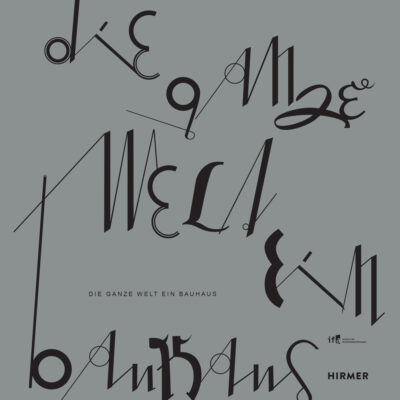Haus Schminke
Some scientists believe that memories are passed down the generations in our DNA.
Could the same theory be applied to concrete, bricks and mortar?
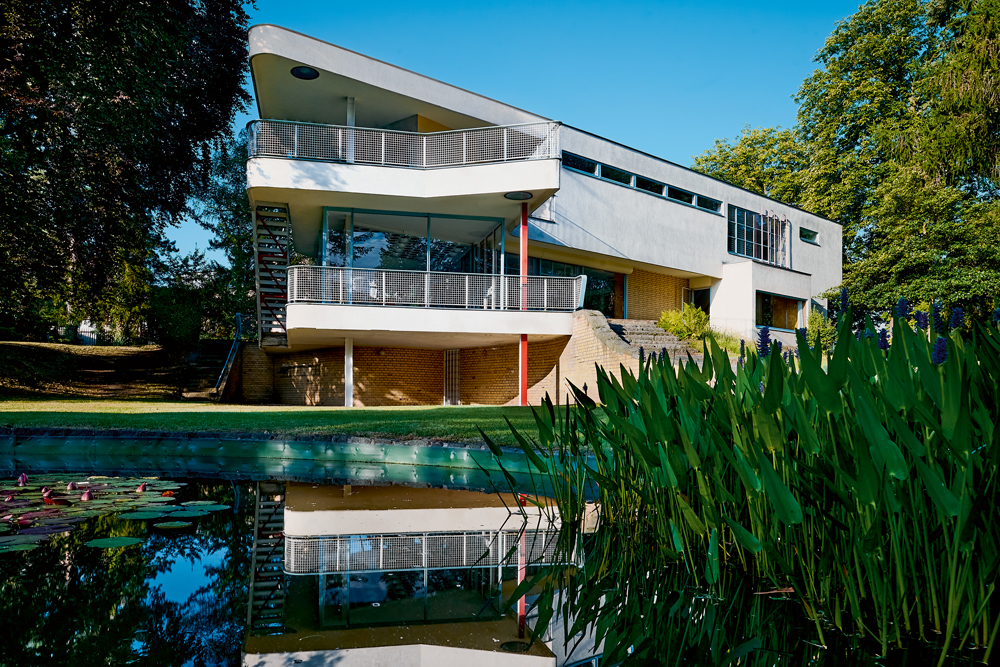
Image Marcel Schroeder ©
Haus Schminke seems to give some truth to this idea. It’s a very special house created by a family whose choices took them on a journey to unexpected places and in what seems like the closing of a circle, the story of the most unlikely descendant.
Charlotte and Fritz Schminke’s request was simple, they wanted “A modern home for two parents, four children and occasionally one or two guests.” They sought somewhere of substance to be built next door to their pasta factory. They hired architect Hans Scharoun, at the top of his game when he accepted the commission in 1929. It turned out to be his final important project before the Nazis came to power and by many, it is considered his most brilliant.

Image Ralf Ganter
“A modern home for two parents, four children and occasionally one or two guests.”
Scharoun came to the commission an already highly respected Modernist who carefully interpreted the Schminkes’ request. He took, you could say, a bottom-up approach; his design reflected the needs and curiosity of the four Schminke children Harold, Gertraude, Erika and Helga. As it turned out the house was road-tested by a fifth youngster Ello Hirschfeld, the daughter of artist and teacher Ludwig Hirschfeld Mack. Forced into exile in England in 1936, Hirschfeld Mack had been an important figure in Bauhaus and Modernist circles. His wife Elenor had multiple sclerosis and when her health deteriorated her friend Aenne Scharoun stepped in to care for her youngest child, Ello, who was then sent to Löbau to live with the Schminke family. She stayed in the house from 1941 until late 1944. Later in life she became a furniture designer, married an architect and her two grandsons also became architects.
The success of the house’s design from a child’s perspective is evident in Charlotte’s joyful family photos. An avid amateur photographer she took many photos during construction, and with Fritz’s short films on Kodak Normal-8, there is a significant collection. Other important photos that help us understand the nature of the house not as a monument but as a family home, were taken by Hans Scharoun’s official photographer on the project, Alice Kerling. Follow the link at the bottom to the work of Klaus Kürvers to see a selection of these photographs.
Height and space were calculated with a child in mind, imaginative use of coloured glass and a staircase that by chance, or perhaps not, worked very effectively as a child-sized slide. These design decisions would make a luxury designer home equally suitable as a refuge for children in the aftermath of the coming war. Scharoun’s design plan was complete, every aspect became part of the whole, from the light fittings to the colour palette of the house.
Charlotte like many Germans before the war was enamoured by the dietary recommendations of Swiss physician Maximilian Bircher-Benner. According to Architectural Historian Klaus Kürvers, this was reflected in the landscape and interior architecture, the design of vegetable patches, greenhouses, the planting of fruit trees and insulated storage spaces allowed for fresh fruit and vegetables to be available year-round. Peter Blundell Jones attributes the garden design to Herta Hammerbacher and Hermann Matern although it should be noted that this is speculative as there is no clear evidence.
Celebrated Swiss manufacturer Salubra, who worked with Corbusier, created the wallpaper and Bauhaus student Otti Berger (later murdered in Auschwitz) was hired to design the furnishing and curtain fabrics. Oskar Schlemmer was asked to submit artwork and correspondence exists that confirms that it was seen in draft form. Ultimately the work was not commissioned and, unfortunately, the draft of Schlemmer’s proposed work is missing.
Haus Schminke fully embraced the tenets of New Objectivity, an unsentimental style that emerged in Germany. The house was a project close to Scharoun’s heart; he later fondly described it as his ‘dearest’. Locally the house was nicknamed der Nudeldampfer – the noodle steamer, a name which has stuck to this day. For Scharoun the design clearly represented something important. With its use of curved steel and glass it nodded to the era’s fascination with travel and machines and, most of all, the great liners. Scharoun was born in Bremerhaven home of the SS Bremen, then the world’s fastest ship and recipient of a westbound Blue Riband. The nautical impact on the architect’s upbringing, the Schminke Foundation notes, left a mark on him. Klaus Kürvers describes the photo montage in the children’s playroom, ‘Scharoun has documented this connection between house and ship for everyone to see. In addition to the world map there is a large photo of the ‘Bremen’ and an aerial view of the port facilities of Bremerhaven and the red and white checkered Speckflagge, the city flag of Scharoun’s hometown. What ships are to Scharoun, are to Fritz Schminke, who trained as a pilot in World War 1, airplanes…The photographs show the engineering achievements for which Germany was internationally respected and admired’.
Kürvers goes on, ‘The flag with the swastika was missing from Scharoun’s draft, but Fritz Schminke has it inserted to correspond to the flag chosen by Scharoun’, Kürver spots that in a perfect rounding of the whole – the brand name of the pasta factory was Anchor (Anker in German)..
May 31st 1933 was an extraordinarily exciting day for the family – the day they move into their new home in the presence of Hans Scharoun. He sketched the family and the house in the first two pages of their new guest book and wrote:
“The new ship of life is under steam”

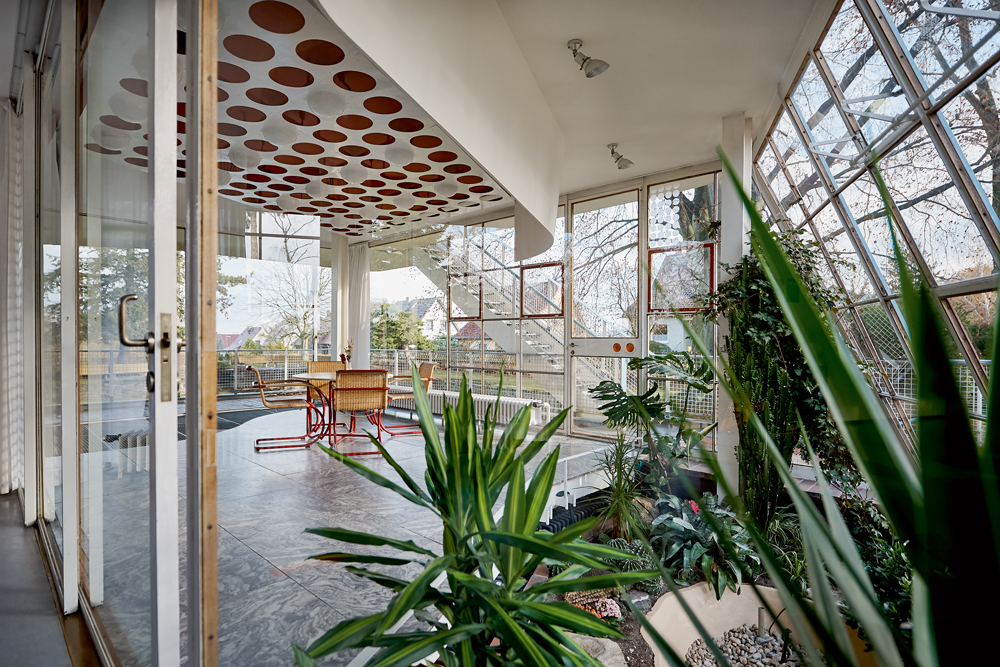
Wintergarden Image Marcel Schroeder
As the country changed course and embraced fascism, so did the family. Brothers Fritz and Joachim ran the Anker business, Fritz, in the senior role, and, for a short time, a member of the Nazi party, after which he joined the Luftwaffe with Joachim then taking up the reins.
When the Soviet army advanced to Löbau they occupied the house. By some peculiar turn of events, rather than ransacking the house as a spoil of war, the Soviet military commander for the region saw its worth, moved in and gave orders that nothing be removed. That was the saving of the house but not of Fritz Schminke. Fritz was a prisoner and not released until 1949. According to the Foundation Haus Schminke ‘Fritz Schminke left the GDR in 1950, since he was now considered a war profiteer: his company used to supply the Wehrmacht with pasta’. Charlotte was allowed back in the house in 1946 when the Soviet commander moved out. The house, so well designed for children, was repurposed by her as a temporary home for children displaced by the terrible bombing of Dresden.
With communist rule, the family lost their business and the factory became an ‘enterprise belonging to the people’ (Volkseigener Betrieb) newly named VEB Anker-Pasta.
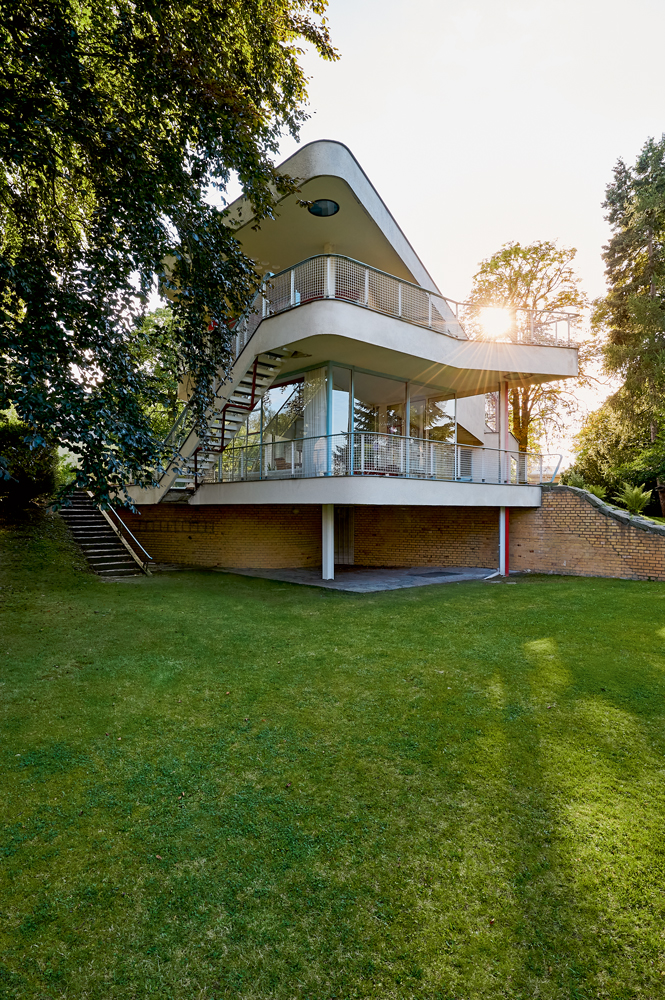
Image Marcel Schroeder ©
While houses remain rooted to the spot people do not. Displaced by history, in the early 1950s, Fritz departed to live in Celle in West Germany – later followed by Charlotte who left the house in 1951. On May Day that year the city administration assigned the house to the state-run Kreispionierhaus – Pioneer House for teenagers used by the Freie Deutsche Jugend, an ideological youth movement. According to Klaus Kürvers, ‘the city paid the lease to Fritz for one year, on July 18 1952 on the basis of Ordinance on the Protection of Assets passed the day before declared (the house) public property. The removal of the family’s connection to the property was complete.
From generation to generation
Conservationists were well aware of the house’s architectural merit regardless of which side of the wall they sat and according to Klaus Kürvers as early as 1961 questions about it were posed to Hans Scharoun. Meanwhile, life went on… Gertraude Schminke married and moved to Bochum where her daughter Tina was born. An inheritor of that weighty legacy, Tina joined Action Reconciliation Service for Peace (a German organisation founded to confront the legacy of Naziism) and visited Israel in 1973 with the organisation as a medic. Perhaps she had not intended to stay but she met and married the child of Holocaust survivors, converted to Judaism and vowed to never speak another word of German.

Haus Schminke Image Ralf Ganter ©
Haus Schminke was given Monument status in 1978 but it wasn’t until a few years after 1990 reunification that Fritz’s daughters tried to get the family home back. That process is known as Rückübertragung was and remains, a huge challenge in reunified Germany, unpacking who occupied properties and to whom they should be returned. Ultimately the sisters gave up and handed the house to the City of Löbau. Once again the family’s connection to the house was removed in all but name. This takes us back to the question of who is the keeper of the memory of a house – is it in the concrete, the brick, the wood, glass and steel or is it in the memory of individuals and passed down from generation to generation?
‘preserve the house, transform it into a cultural venue for art and architecture buffs from around the world’


Image Marcel Schroeder
Tina’s daughter discovers unexpected family history
Tina’s Israeli daughter, Anael Berkovitz, a video artist – was brought up knowing nothing of her family history or the house. She discovered her heritage while on a visit to New York as part of her Master of Fine Arts degree in 2016. This changed the course of her artistic life and gives us further pause for thought. Anael contacted Merte Stork of the Haus Schminke Foundation and was invited to visit and stay overnight in the house.

The kitchen Image Anael Berkovitz
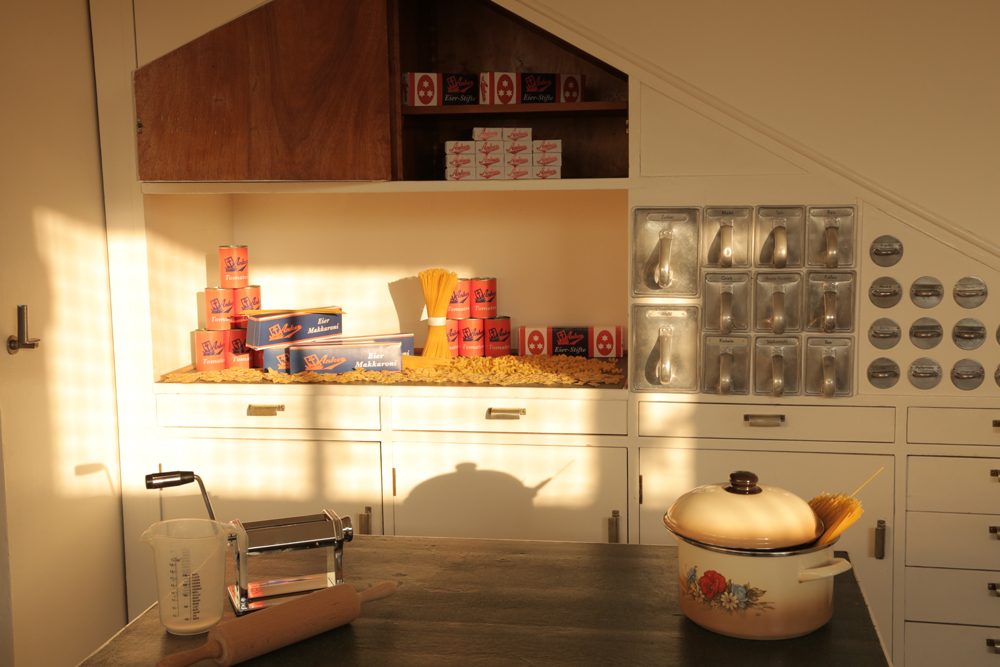
Anker brand reimagined by Anael Berkovitz
In a three-month residency at the Bauhaus in Dessau that followed, Anael created a video and used photos to compose a work focusing on the memories of her mother, her own experience of visiting the house in Löbau and, by connection, her own relationship to Germany and her mother, through the prism of the house. She selected a theme with familial significance, Oskar Schlemmer’s Triadic Ballet (her mother Tina is a trained ballerina), as a means to approach her German family history. Using film made with the school, Anael speaks vividly about lost identity both willfully (her mother) and by virtue of history (her father’s family) and her experience of visiting and staying in the house for the first time, grappling with the enormity of what was lost and what was found.
Anael’s journey continued she exhibited in a 2021 exhibition at Scharaun.de, the art and architecture space in the former Berlin family home of Hans Scharoun. It was called Heimweh, the gallery’s accompanying commentary explains:
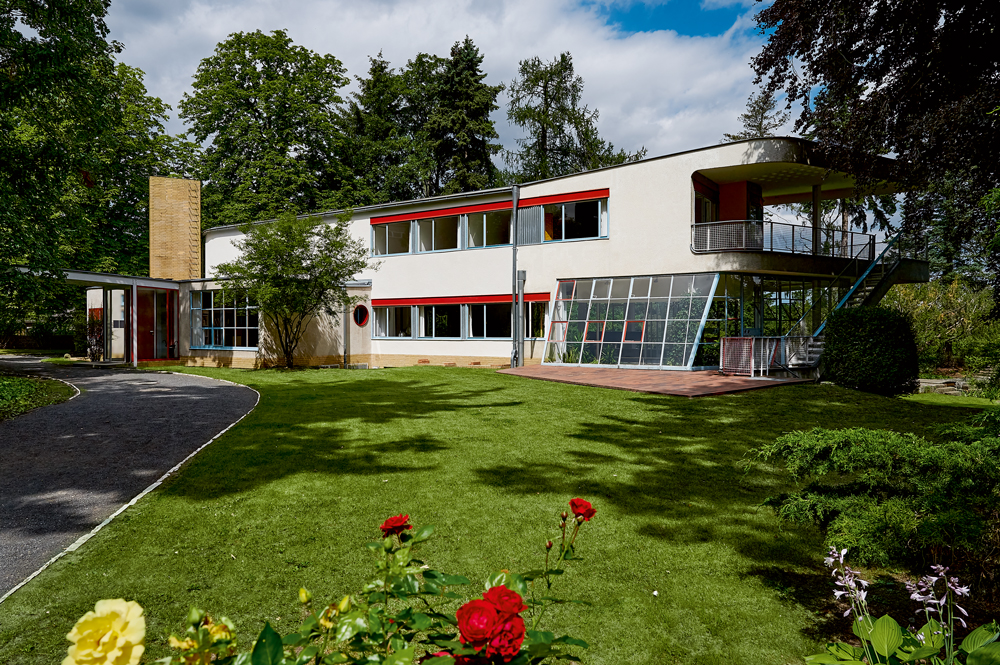
Haus Schminke with view of grounds image Marcel Schroeder
‘Identity, memory, place and context play an important role in Berkovitz’s work. At Scharaun the biographical culminates in the video… which in a unique way underlies individual mythology in collective as well as cultural memory with the artist’s own family architecture.
You wouldn’t bet on this being the end of the story of the house Hans Scharoun built – now considered one of the most important examples of New Objectivity in Germany. The research goes on and while it may not be giving up secrets on the scale of Anael discovering her family history, the house will reveal more of a time and a vision that but for the evil and tragedy of Naziism, may have continued to develop a wonderful aesthetic.

Images Marcel Schroeder ©
Visiting Haus Schminke
Sources:
Stiftung Haus Schminke










